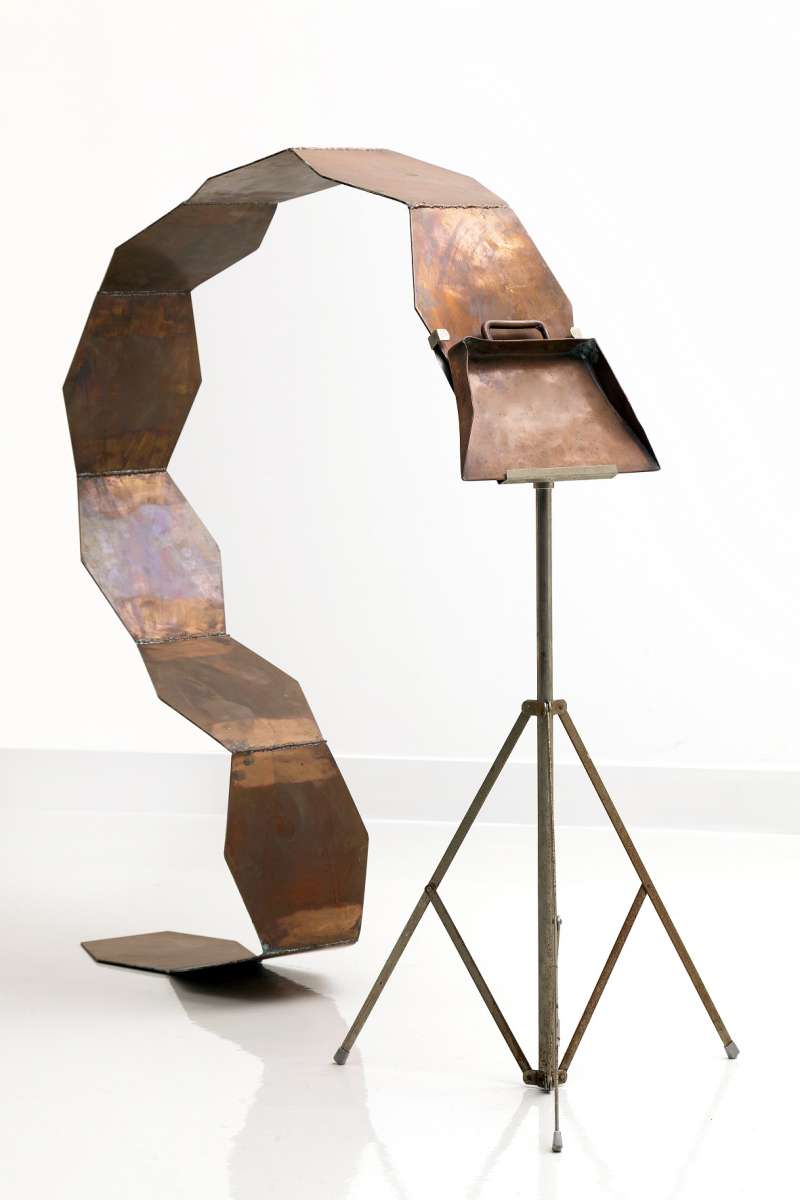Joseph Semah
The Hidden Face [HeSTeR PaNIM]
The Hidden Face [HeSTeR PaNIM] is the title that Joseph Semah devised for the opening exhibition on 12 March in the new exhibition space of Willem Baars Projects. It embraces multiple layers that are inextricably linked to Semah’s oeuvre. As a gallery owner, every time you visit a studio you hope to cone upon a treasure-chamber that has been lying in wait for you, intact and untouched. I consider myself incredibly fortunate that in making the acquaintance of Joseph Semah, what I was privileged to discover was one such – almost untouched − treasure chamber. An entire oeuvre lay hidden away in Amsterdam waiting for someone to discover it. An oeuvre that does not easily reveal itself – both literally and figuratively speaking.
The artist and philosopher Semah, who was born in Baghdad and grew up in Israel, but who has been living in Amsterdam for over thirty years now, has himself ensured that the hidden aspect of his art has come to be part and parcel of his work. After all, knowing and seeing everything does not necessarily lead to happiness. Even so, I was able to persuade him to gradually reveal some of the secrets of this multi-faceted oeuvre, which spans four decades, to a wider public. Up until now, Semah has exhibited only sporadically, at meticulously planned shows, and only a few select individuals have been able to procure anything from his treasure-chamber. I am therefore delighted that he has agreed to a gallery exhibition, which I am sure many viewers will experience as a revelation.
Semah’s work is best described as a profound and wide-ranging exploration of the links between religion, mysticism, art and science. A scholar of holy texts, he creates his own conceptual and pictorial world as part of his quest, placing human beings at the centre of this world. Semah seeks to understand people in the present day, in relation to communities with their own culture and history. So he is a humanist pur sang, who is not looking for definite answers; on the contrary, he leaves his viewers as much scope as possible to interpret his conceptual world. He regards the sculptures, installations, drawings and paintings that record his investigations as footnotes to his contemplations. A central theme is the presence of Jewish tradition in Western art history. In an entirely individual way, Semah shows how this tradition influenced, direct or indirectly, artists such as Marcel Duchamp, Joseph Beuys, Barnett Newman and El Lissitzky. The results of his painstaking quest through words and images assume tangible form in his art. Thus, Semah knows how to make visible and palpable what cannot be named, producing images that can be read on different levels, and that are therefore never coercive. For Semah, the ultimate meaning of an artwork depends on the intensive process of ‘reading’. He therefore refers pointedly in the title of his exhibition Journey into PaRDeS (Museum van Bommel van Dam, Venlo, 2004) to the four layers of meaning introduced by the philosopher Emmanuel Lévinas: literal, allusive, induced, and secret. However much may be concealed in all these layers, one of the great qualities of his artistic output is that his images also hold up without any prior knowledge. In a formal sense, his work links up with many schools that have combined to produce the history of art over the past forty years. Semah navigates superbly between conceptual art, minimal art and poetic expression. Through the compassionate nature of his art, the social and narrative contexts are always tangible.











